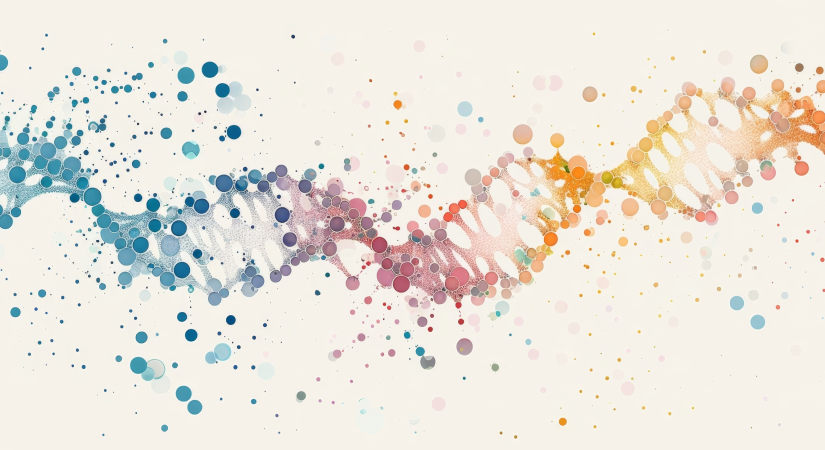by Ellie Gabel
6 minutes
The Unbreakable Cryo-Chain Required for Cell and Gene Therapies
How cryogenic cold chains protect CGTs and how advanced tech prevents failures in temperature, tracking, and transport.

Cryogenic cold chains, also known as cryo-chains, play an important role in the success of modern cell and gene therapies (CGTs). It is the driving technology that allows sensitive medications to reach patients with complete integrity and efficacy intact. However, the process is delicate and comes with numerous logistical complications. A single error could disrupt the entire operation. Here are the ways professionals avoid mistakes to save lives.
The Role Cryopreservation Plays in CGTs
The cryo-chain maintains medicines by using cold temperatures to place cells and tissues in a temporary stasis. This approach prevents natural degradation from occurring, ensuring medicines are at their most powerful when they reach the customer. Ice crystals may form as a result, which could damage cells when they break. This is why cryoprotectants shield vulnerable cells against the formation of ice crystals.
Some medicines travel thousands of miles over many countries to reach their patients. Therefore, the industry continually innovates and seeks ways to reduce the likelihood of errors in this process. This includes the introduction of strategies like cryo-electron microscopy, which freezes samples faster to minimize crystal size in the product.
Technologies like artificial intelligence are increasing data visibility, making it simpler for organizations to discover pain points throughout their supply chains. It is also valuable for boosting resilience in other aspects of CGT transportation and creation, such as:
- Finding more precise temperatures for specific medicinal variants.
- Predicting crystal formation behaviors.
- Judging cell strength against the pressures of potential crystals.
- Overseeing logistical and communication errors and their influence on the medicine.
The Main Obstacles in Transportation
The supply chain for CGTs must be as error-free as possible. Many medicines are personalized for specific patients and must exist in specific environments — often in extreme cold. Preservation of environmental controls is critical, as even slight deviations in cooling abilities or humidity can compromise the medicine’s effectiveness. Other factors could disrupt a CGT’s journey to the patient, such as incorrect labeling or timing concerns. This is how each aspect puts pressure on workers to enhance monitoring.
Maintaining Cold Temperatures
Temperatures between -60° and -150° Celsius or lower are the best for CGTs. The containers must be resistant to cracks and other openings and tamper-proof. Pharmaceutical experts must establish relationships with third parties that supply dependable, ultracold containers that are easy to monitor and resistant to breaches.
Racing Against Time
CGTs have a window of opportunity to perform at their peak effectiveness. International suppliers work to expedite time-consuming processes, such as customs, that could delay medicines for an excessive amount of time. The longer a CGT is in transit, the more uncontrollable influences, such as weather and third-party logistics issues, can arise. By the time the medicine reaches its destination, it may have lost some of its potency.
Ensuring Identity
Many CGTs rely on an individual’s cells to create the medicine. However, allogeneic-based therapies rely on donors. Therefore, labels that clearly show the contents are critical. Failure to administer the right medicine could worsen a patient’s outcome. Numerous tracking methods are available in addition to labeling, including techniques like RFID tagging and more advanced methods like blockchain.
How to Forge an Unbreakable Cryo-Chain
These strategies can aid pharmaceutical stakeholders by increasing the chances of CGTs arriving safely.
Implement Disruptive Technologies and Monitoring
Traceability and visibility are vital for discovering the most significant points of failure in the supply chain. If a company consistently delivers low-quality medicines, it must identify the cause.
If the issue stems from compromised containers, for instance, this may require a new supplier. The problem may also be a lack of fleet training, as workers could accidentally introduce contaminants or compromise handling procedures. Monitoring solutions are vital for process discovery. The data will inform high-priority actions to eliminate the most significant threats to CGT effectiveness. Some technologies to try include:
- Transportation management systems
- Barcode scanners
- Warehouse management systems
- Electronic logging devices
These technologies help inform effective decision-making, ensure proper equipment handling and maintain high-quality logistics for managing perishable goods.
Build Systems to Support Autologous and Allogenic Therapies
Patient-targeted and more generalized CGTs demand unique manufacturing and transportation methods. The former requires small-scale batches with more complex supply chains, while the latter follows a more linear route in higher quantities. Autologous medicines must have designated infrastructure that considers their patient-critical nature, rather than relying on conventional pathways to reach facilities.
Establish Global Connections and Priorities
Some hospitals and specialists rely on CGTs from distant providers. While receiving expertly crafted products from the world’s best makers could help patients, it introduces more room for error. Communicating with global partners and encouraging the rollout of more localized distribution centers will help minimize shipping distances, thereby saving precious time.
Beating the Cold
Organizations have more control today over cryogenic conditions than they did years ago. The sector is getting closer to a more foolproof model, with fewer influences able to affect a medicine’s strength. Reinforcing the supply chain is one of the most impactful ways to practice patient-first care. While many medicines reach their destinations successfully, many do not — mending these gaps will save lives.




